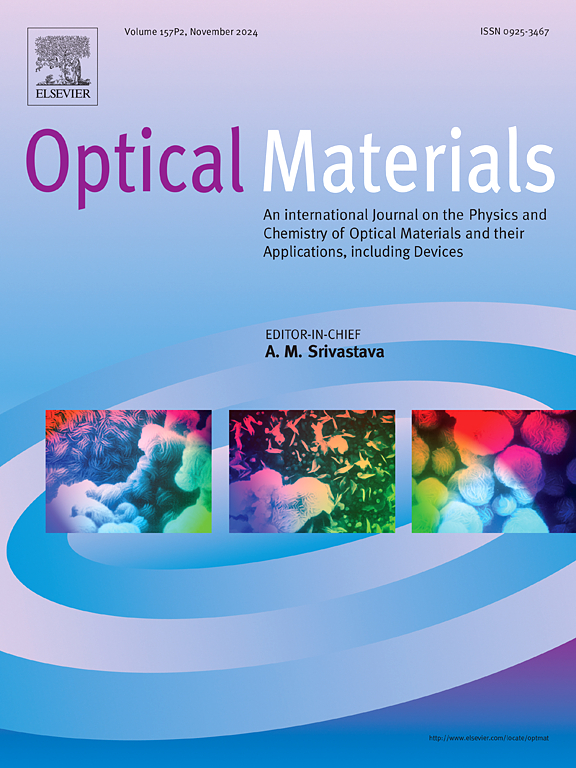Construction of 2D/3D biochar modified g-C3N4 for efficient removal of tetracycline hydrochloride via photocatalytic PMS activation
IF 3.8
3区 材料科学
Q2 MATERIALS SCIENCE, MULTIDISCIPLINARY
引用次数: 0
Abstract
The conversion of abundant forestry/agricultural residues into value-added photocatalytic materials represents a sustainable strategy for environmental remediation. This study reports a one-step synthesis of wood flour-derived biochar (BC) coupled with 3D flower-like g-C3N4 (3D CN) to address the inherent limitations of rapid charge recombination and poor light absorption in bulk g-C3N4. Comprehensive characterization revealed that BC incorporation significantly enhanced both charge separation and light-harvesting capabilities. When applied in peroxymonosulfate (PMS) activation under visible light, the optimized 3D BC-CN60 composite demonstrated remarkable tetracycline hydrochloride (TC) degradation efficiency, achieving a first-order kinetic constant (56.04 × 10−3 min−1) 5.27-fold higher than pristine 3D CN. Systematic investigations of operational parameters (catalyst dosage, calcination temperature, TC concentration, PMS content, and pH) yielded optimal conditions achieving 98.04 % TC removal within 60 min. Radical quenching experiments identified 1O2, •SO4− as well as •OH as the predominant reactive species, while intermediate analysis proposed two possible degradation pathways. The significantly improved photocatalytic performance is attributed to BC's dual function as both an electron acceptor and conductive bridge, which effectively suppresses charge recombination while promoting interfacial electron transfer. This work provides fundamental insights into biomass-derived carbon materials for designing efficient photocatalytic systems, demonstrating the potential of agricultural waste utilization in advanced oxidation processes for antibiotic wastewater treatment.
二维/三维生物炭修饰g-C3N4光催化PMS活化高效脱除盐酸四环素的构建
将丰富的林业/农业残留物转化为增值光催化材料是一种可持续的环境修复策略。本研究报道了木粉衍生生物炭(BC)与3D花状g-C3N4 (3D CN)的一步合成,以解决g-C3N4本体快速电荷重组和光吸收差的固有局限性。综合表征表明,BC掺入显著提高了电荷分离和光收集能力。在可见光下进行过氧单硫酸盐(PMS)活化时,优化后的3D BC-CN60复合材料表现出显著的盐酸四环素(TC)降解效率,其一级动力学常数(56.04 × 10−3 min−1)比原始的3D CN高5.27倍。系统研究了操作参数(催化剂用量、煅烧温度、TC浓度、PMS含量和pH),得出了在60分钟内脱除98.04% TC的最佳条件。自由基猝灭实验确定了1O2、•SO4−和•OH是主要的反应物质,而中间分析提出了两种可能的降解途径。BC具有电子受体和导电桥的双重功能,在促进界面电子转移的同时有效抑制了电荷重组。这项工作为设计高效光催化系统提供了生物质衍生碳材料的基本见解,展示了农业废弃物在抗生素废水处理的高级氧化过程中的利用潜力。
本文章由计算机程序翻译,如有差异,请以英文原文为准。
求助全文
约1分钟内获得全文
求助全文
来源期刊

Optical Materials
工程技术-材料科学:综合
CiteScore
6.60
自引率
12.80%
发文量
1265
审稿时长
38 days
期刊介绍:
Optical Materials has an open access mirror journal Optical Materials: X, sharing the same aims and scope, editorial team, submission system and rigorous peer review.
The purpose of Optical Materials is to provide a means of communication and technology transfer between researchers who are interested in materials for potential device applications. The journal publishes original papers and review articles on the design, synthesis, characterisation and applications of optical materials.
OPTICAL MATERIALS focuses on:
• Optical Properties of Material Systems;
• The Materials Aspects of Optical Phenomena;
• The Materials Aspects of Devices and Applications.
Authors can submit separate research elements describing their data to Data in Brief and methods to Methods X.
 求助内容:
求助内容: 应助结果提醒方式:
应助结果提醒方式:


